March 22, 2023 feature
This article has been reviewed according to Science X's editorial process and policies. Editors have highlighted the following attributes while ensuring the content's credibility:
fact-checked
peer-reviewed publication
trusted source
proofread
Measuring the cohesive force of meteorite fragments to identify the mobility of asteroids
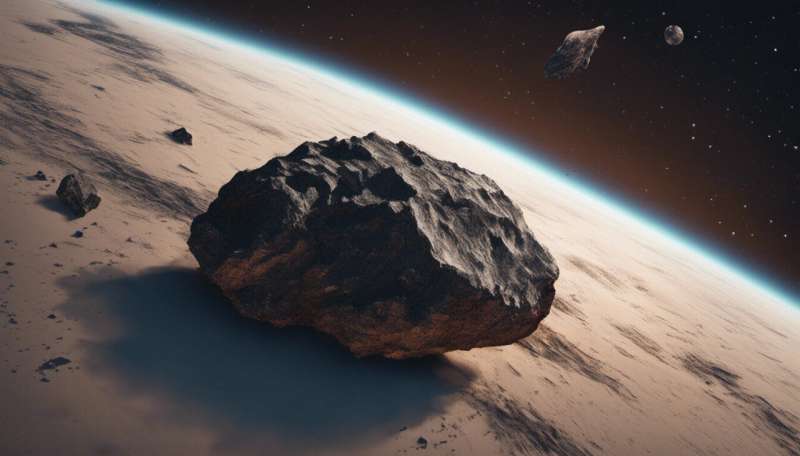
The cohesive force of asteroid particles influence microgravity and can be evaluated under several assumptions of particle size and their sensitivity to particle shape. Approximately hundreds of kilograms of material fall on to Earth's atmosphere daily from space, and filter down as tiny grains and fine dust. Many meteorites that reach Earth from space are pieces of asteroids.
In a new report now published in Science Advances, Yuuya Nagaashi and a research team in planetology at the Kobe University in Japan, conducted cohesive force measurements of meteorite fragments. The cohesive force of the asteroid particles were orders of magnitude smaller, resulting in the high mobility of asteroid surface particles identified during space exploration. For astrobiologists interested in the earliest history of Earth and the solar system, these particles that have survived almost unaltered offer significant information of the earliest period of the solar system's history.
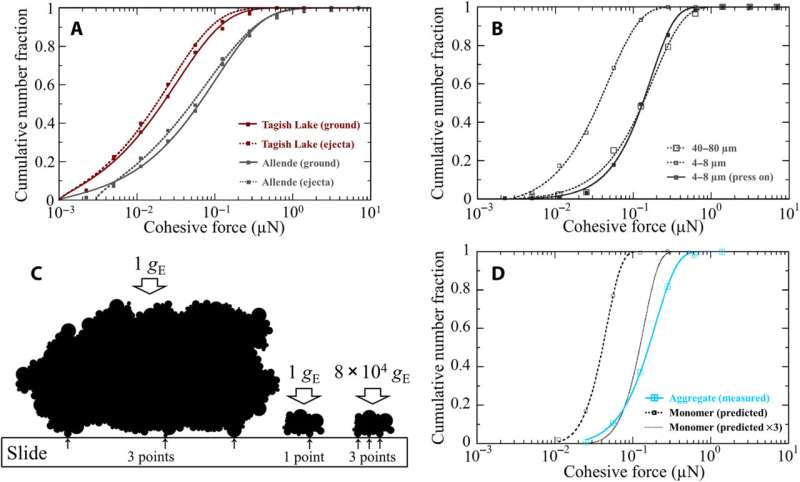
The fundamental forces behind the origin of planets
The onset of planetary formation relies on cohesive and adhesive forces between similar and different particle types that are key to understanding the evolutionary and eolian processes on planets. The cohesive force is a fundamental factor influencing coagulation processes and affects small bodies in microgravity environments. For example, it constitutes the fundamental force underlying particle migration due to the pressure of gas from a spacecraft or due to seismic wave accelerations resulting from an impact.
To conduct direct measurements of such cohesive forces, Nagaashi and colleagues used the centrifugal method and produced Allende and Tagish Lake carbonaceous chondrite fragments by using a motor and pestle, and obtained samples with well-characterized surface structures. The team conducted measurements under evacuated conditions or after heating them to observe the underlying impact.
![Cohesive forces of meteorite fragments and abundance of matrix in the meteorites. Open symbols and dashed error bars indicate measurements under ambient conditions. The Tagish Lake and Allende meteorite values were obtained in this study; all other values are based on a previous study. The cohesive force per contact point between particles was corrected by one-half [because values obtained using the centrifugal method were measured between a particle and a slide] and one-third (because particles of tens of micrometers in size were in contact with a slide at approximately three points). Matrix abundance values were obtained from previous studies. Plots and error bars represent typical values and the range of the cumulative number fraction corresponding to 0.25 to 0.75, calculated by fitting Eq. 3 to the measurements, respectively. Closed symbols and solid error bars represent cohesive forces 3.5-fold greater than those measured under ambient conditions. The values are summarized in Table 1. Credit: Science Advances (2023). DOI: 10.1126/sciadv.add3530 An asteroid-meteorite link – measuring the cohesive force of meteorite fragments to identify the mobility of asteroids](https://scx1.b-cdn.net/csz/news/800a/2023/an-asteroid-meteorite-2.jpg)
Technical characterization of meteorite fragments
To study the shape of meteorite fragments, Nagaashi and the team used optical microscopy and confocal laser scanning microscopy. The outcomes did not distinguish between methods of fragmentation, nor did they indicate a significant difference in cohesive-force measurements among fragments of the same meteorite. However, when the team compared two types of meteorites, they noted the cohesive force of the Allende fragments to be several times greater than the Tagish Lake fragments.
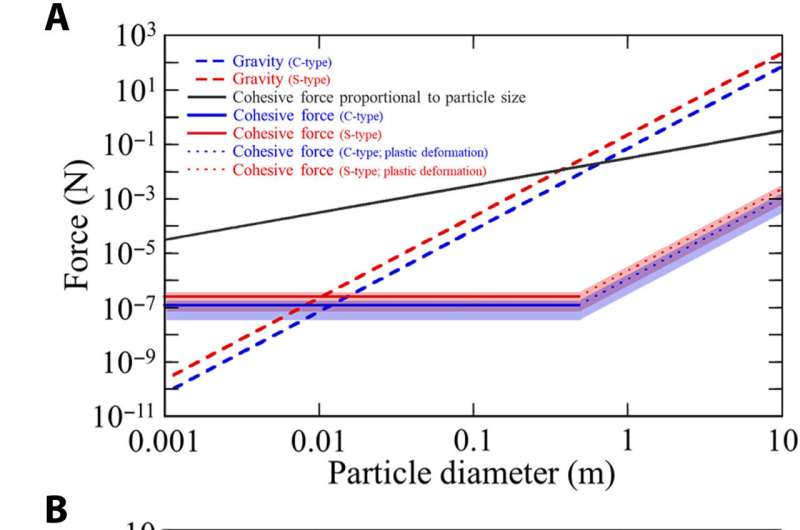
The researchers used atomic force microscopy to reveal the fine surface structures of meteorite fragments obtained from Tagish Lake samples and showed the cohesive forces to rely on surface structures at the sub-micron scale. When they heated the samples, the cohesive force increased by three-to-four manifolds due to surface water vapor evaporation and water composition reduction, resulting in a process of proportionally increased surface adhesion to reveal that cohesion in meteorite fragments depended on their surface topology.
Meteorite constituents are typically finer after undergoing underlying aqueous alterations and coarse after thermal alteration. Conventionally, scientists had detected the cohesive force of particles on asteroid surfaces based on van der Waals forces that were proportional to the particle size.
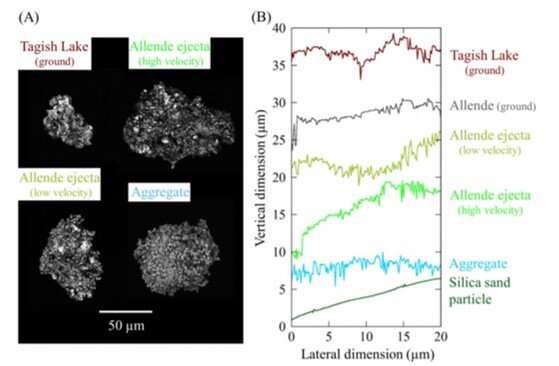
The Bond number
The contact points between the particles relied on the ratio between gravitational and cohesive forces, known as the Bond number. Scientists had previously assumed the cohesive force to be proportional to the particle size; however, the total cohesive force per fragment was smaller, indicating the mobility of the particles on a small asteroidal body.
Nagaashi and the team further studied the mobility of particles in a small asteroidal body relative to the pressure needed to overcome the force of gravity and adhesion and obtained values lower than expected. Such evidence for mass transfer was common to the asteroids Itokawa, Ryugu and Bennu, validating the theoretical estimates made in the study. Furthermore, the plastic deformation of particles can lead to greater cohesive force, which the researchers considered on asteroids by examining their surface appearance or topology.
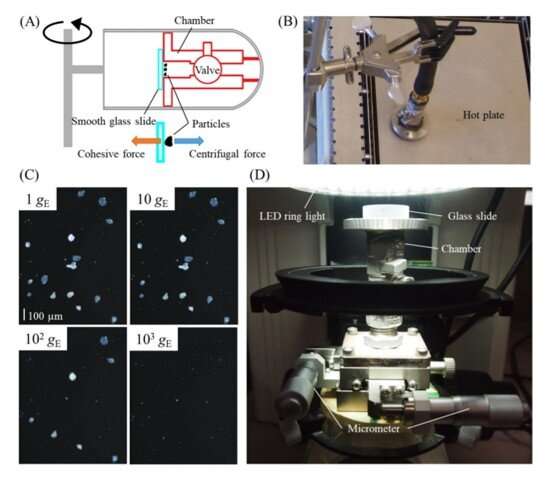
Outlook
In this way, Yuuya Nagaashi and colleagues examined and characterized the cohesive or adhesion forces underlying meteorites or particles of asteroids. A general model of the solar system's formative process can be gleaned from the evidence obtained from meteorites and via telescopic investigations of asteroids. The work described here is focused on understanding the forces of cohesion and adhesion underlying the agglomeration of grains within a dusty layer to form clumps that accrued solid matter in large-scale planetesimals. Such bodies eventually grew rapidly to form embryonic planets.
The primary asteroid-belt located between Mars and Jupiter represent the surviving remnants of the inner solar system's early proto-planetary and planetary embryo population. Meteorites that originate from this asteroid-belt population provide detailed insight to measure the cohesive and adhesive forces underlying the origin of the solar system.
More information: Yuuya Nagaashi et al, High mobility of asteroid particles revealed by measured cohesive force of meteorite fragments, Science Advances (2023). DOI: 10.1126/sciadv.add3530
D. S. Lauretta et al, Spacecraft sample collection and subsurface excavation of asteroid (101955) Bennu, Science (2022). DOI: 10.1126/science.abm1018
Journal information: Science Advances , Science
© 2023 Science X Network



















